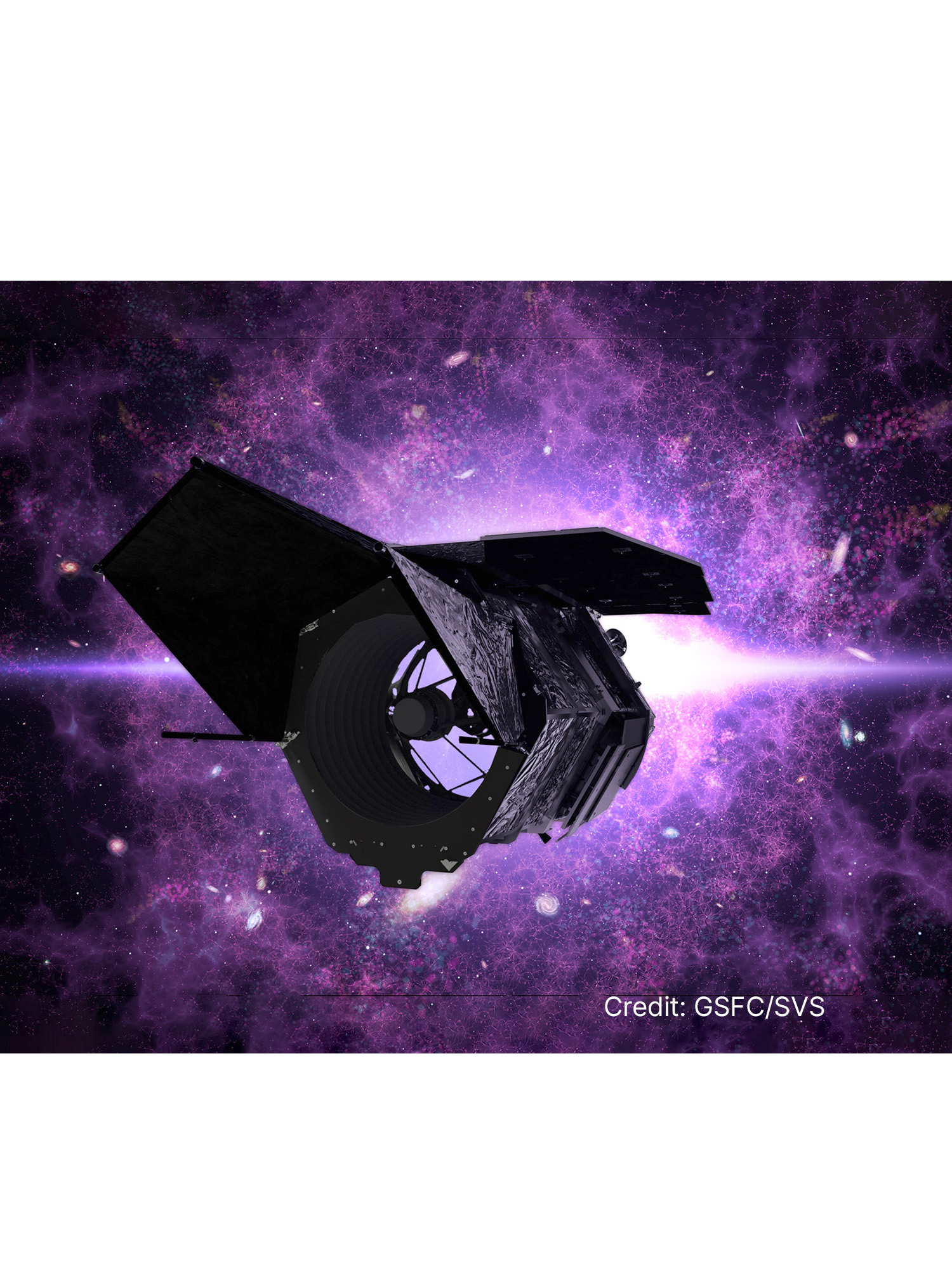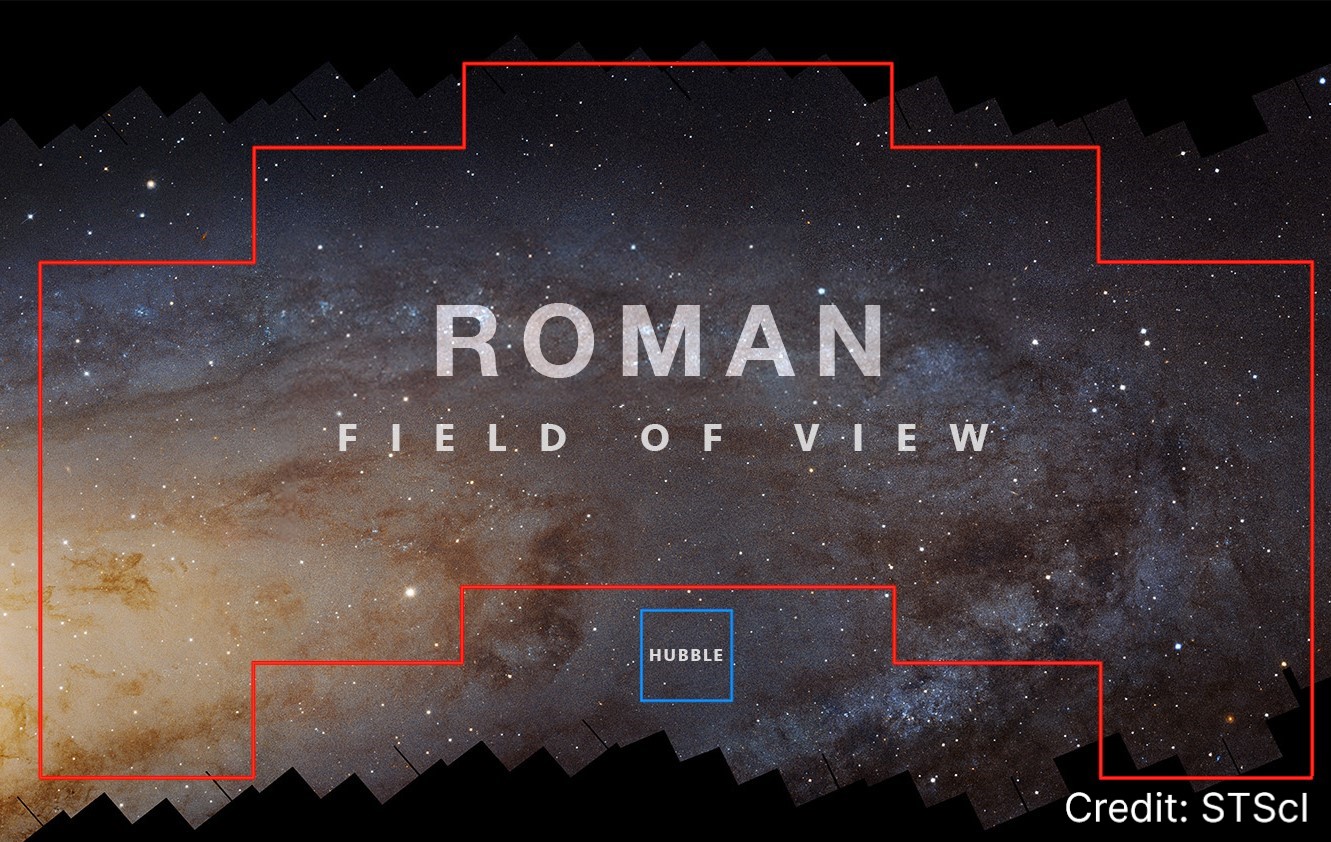

Nancy Grace Roman Space Telescope
The Nancy Grace Roman Space Telescope, formerly known as WFIRST, is NASA’s future premier astrophysics observatory. The Roman Space Telescope will enable advances in astrophysics by providing a large-scale survey capability in infrared wavelengths. The observatory is designed to capture data that will allow astronomers to unlock the mysteries of the universe, answering high-priority scientific questions related to the evolution of the universe and the habitability of planets around other stars.
Using a 2.4m (7.9ft) primary mirror, the Roman Space Telescope will capture comparable quality images to the Hubble Space Telescope, but with more than 100 times the field of view, enabling the observatory to conduct comprehensive and efficient surveys of the infrared sky. Scientists estimate the Roman Space Telescope has the potential to examine a billion galaxies over the course of its mission. It will provide a treasure trove of data to scientists around the world who will have access to the observatory’s data.
Similar to NASA’s other large astrophysics missions, the Roman Space Telescope is also a top mission priority of the last astrophysics decadal survey. This National Academy of Sciences report published every 10 years establishes a community assessment of the most important science questions and missions.

What We're Doing
NASA selected a diverse team from Ball Aerospace to design and develop the Wide Field Instrument (WFI) Opto-Mechanical Assembly for the Roman Space Telescope mission. Ball will partner with NASA to support the optical-mechanical assembly, integration and test of WFI. The optical-mechanical assembly, which includes the optical bench, thermal control system, precision mechanisms, optics, electronics, and the relative calibration system, provides the stable structure and thermal environment that enables the wide field, high quality observations of WFI. Ball's design uses heritage hardware to unfold the incoming light, providing cost and schedule savings to the mission. From the Great Observatories to Webb and the Roman Space Telescope, Ball Aerospace is NASA’s partner in science, enabling decades of discovery through innovative instruments and spacecraft.

What WilL Roman Space Telescope Do?
NASA’s Hubble Space Telescope opened our eyes to the universe and the James Webb Space Telescope is now doing the same, with even greater depth. These observatories are highly capable in terms of image quality but have small fields of view compared to the Roman Space Telescope, which will capture patches of the sky that are about the same size as the full moon. Slated to launch in the mid-2020s, the Roman Space Telescope's large area surveys will provide astronomers with data to further our understanding of the universe’s history and future, the physics of our galaxy and neighboring galaxies, as well as the demographics of exoplanets including those that may harbor life.
Ball Completes Roman CDR
Learn more about this program milestone!
Goddard Space Flight Center
Ball to Build Instrument Component for Space Telescope Mission
Read Ball's news release on the WFI win.
